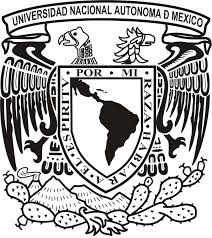CUWB-IV: Frontiers in statistics and probability
 |
|
|
|
|
|
|
All lectures will take place at IIMAS in the Building C, room C13
| Minicourse speaker | Title and Abstract |
| Gareth Roberts |
Retrospective Simulation These lectures will take a fresh perspective on stochastic simulation for use in Bayesian Statistics and Applied Probability. Put simply, retrospective simulation techniques subvert the traditional order of steps in existing sampling algorithms (including inversion samplers, rejection and importance sampling, Markov chain Monte Carlo) in order to effect (often huge) gains in algorithmic efficiency. This short course will introduce the basic techniques, and illustrate them in a number of examples which will include non-reversible MCMC algorithms, simulation and importance sampling of diffusion processes, and draws for major football competitions. |
| Jere Koskela |
An ancestral perspective on genetics and genetic algorithms Populations of particles reproducing at random in discrete generations are canonical models of population genetic evolution. Predicting the genetic diversity in a sample from such a population quickly leads one to consider the random tree describing the common ancestry of that sample. Scaling limits of these random trees for large populations gives rise to the field of coalescent theory and yield tractable predictions of genetic diversity, particularly for neutrally evolving populations. The same populations of particles describe a class of statistical learning algorithms known as particle filters. For particle filters, neutral evolution is applicable only to trivial statistical problems so that many of the innovations of coalescent theory are difficult to leverage. Indeed, the fields of mathematical population genetics and particle filtering have been largely disjoint for decades. These lectures will introduce standard tools of mathematical population genetics, as well as particle filters as general-purpose statistical algorithms. Emphasis will be given to the ancestral perspective, and to connections between the two distinct application domains. |
|
Adrian Gonzalez Casanova and Imanol Nuñez |
Moment duality and the propagation of exchengeability Heuristically, two processes are said to be dual if there exists a function that allows one process to be studied through the other. Sampling duality is a specific form of duality that utilizes a function S(𝑛,𝑥) which represents the probability that all individuals in a sample of size n belong to a certain type, given that the total number (or frequency) of that type in the population is x. While this idea can be traced back implicitly to Blaise Pascal (1623–1662), it was explicitly formalized by Martin Möhle in 1999 in the context of population genetics. such as the simple exclusion process. Additionally, we will discuss a universality result for the Fisher-KPP stochastic partial differential equation. A key focus will be the relationship between exchangeability and duality, providing insights into the lookdown construction. Finally, we will examine a characterization of exchangeable Markov chains and explore how it naturally connects with sampling duality. |
Talks by:
Schedule
All lectures will take place at IIMAS in the Building C, room C13
| TIME | Monday | Tuesday | Wednesday | Thursday | Friday |
|
9.30-10.30
|
Gareth Roberts
|
Gonzalez
Casanova +Nuñez |
Cardenas |
Gareth Roberts
|
Jere Koskela
|
| Krasnowska | |||||
| Anzures | |||||
| Angtuncio | |||||
| 10.30-11.00 | Coffee | Coffee | Coffee | Coffee | Coffee |
|
11.00-12.00
|
Jere Koskela
|
Jere Koskela
|
Gareth Roberts
|
Gonzalez
Casanova +Nuñez |
Marifer Gil
|
|
12.00-12:45
|
Kari Heine
|
Yi Yu
|
Gonzalez
Casanova +Nuñez |
Anita Behme
|
END
|
| 12:45-13:00 | Quintanilla | Molina | Hata | ||
|
13:00-15:00
|
Lunch
|
Lunch
|
Free time
|
Lunch
|
|
|
15.00-16.00
|
Gonzalez
Casanova +Nuñez |
Gareth Roberts
|
Jere Koskela
|
||
| 16.00-16.30 | Coffee | Coffee | Coffee | ||
|
16.30-17.15
|
Lizbeth Peñaloza
|
Leticia Ramirez
|
Emilien Joly
|
||
| 17.15-17.30 | López | Bravo | Sapranidis |
Title and abstracts for the talks:
Anita Behme: Siegmund-duality for Markov processes
According to Siegmund (1976) two time-homogeneous Markov processes $X,Y$ on $\textbb{R}_+$ are dual, if for all $t,x,y\geq 0$. $$\mathbb{P}^x(X_t\leq y) = \PP^y(Y_t\geq x).$$. This duality is a helpful tool in applied probability as it allows (under suitable regularity conditions) to express the stationary law of one of the processes via hitting probabilities of the other process. We recall a few well-known examples of pairs of dual Markov processes and their applications, add new case-studies, and discuss how to find a dual process in the general context of Lévy-type processes. Further, we will shed some light on the connection between the above duality and the related concept of time-reversal as used in the theory of semimartingales.
In this talk, I will start with an overview of the foundational concept of differential privacy (DP). I will then introduce three notions of DP tailored to the federated learning context, highlighting their relevance and implications in distributed settings. The core focus of this talk will be on a functional data estimation problem under a hierarchical and heterogeneous DP framework. I will discuss how privacy constraints impact estimation accuracy and quantify these tradeoffs through the lens of minimax theory. Key aspects of the proofs will also be outlined, as well as some numerical performances.
Title and abstract from the students:
Sebastian Quintanilla: Bayesian inference of genetic ancestry, using the sequentially Markov coalescent with memory
The genetic history of living beings is encoded in their DNA, and those sequences can be traced back to a common ancestor. Having a sample of DNA sequences from individuals of a same population, it is natural to ask ourselves how this genetic variety came about. Ancestral recombination graphs (ARGs) are a mathematical object that trace the genealogical history of a sample of sequences back to their common ancestor, in the presence of genetic recombination. Knowing the true ARG of a sample is impossible, so a stochastic process called the Coalescent with recombination (CwR) is used to model the unseen history. This process, although simple in its definition, can be computationally demanding when used for Bayesian inference of the true ARG. In this talk we will present different approximations to the CwR by using sequences of trees that are satisfy the Markov property. We will focus on the potential benefits of adding memory to the tree sequence for performing Bayesian inference of the true ARG. We will also present a potential simplification of the inference, where the aim is to obtain the branch length of the local trees instead of the whole ARG, reducing this way the dimensions of the state space.
Kotaro Hata: Uniform Weak Convergence of Random Walks to Additive Processes
An additive process is a class of continuous in probability stochastic processes with independent increments. A Brownian motion is an example of an additive process, and Donsker’s theorem is a limit theorem for a Brownian motion. So our aim is to get a limit theorem for additive processes. In this talk, I will define the new convergence “uniform weak convergence”, and then I will give the necessary and sufficient condition for random walks generated by an infinitesimal triangular array to weakly converge to an additive process uniformly. Afterwards, we will provide some examples in specific cases. This talk is based on a joint work with Takahiro Hasebe (Hokkaido University).
Osvaldo Angtuncio: The coalescent structure of multitype continuous-time Bienaymé-Galton-Watson trees
In this talk we discuss the genealogy of a sample of $k\geq 2$ individuals, from a continuous-time, finite variance multitype Bienaymé-Galton-Watson tree that survives up to a large time. The technique used is via a change of measure, extending the work of Harris, Johnston and Roberts (2020). We will also discuss the law of the times when the particles in the sample coalesce, the types of the individuals when coalescing, and scaling limits of such laws. We will also discuss the limiting coalescent process, which is a new type of multitype coalescent changing types in every infinitesimal time. This is a joint work with Juan Carlos Pardo and Simon Harris.
Frank Bravo: Logistic Branching Brownian Motion
We study a spatial population dynamics model whose underlying branching structure follows the branching process with logistic growth defined by A. Lambert.Specifically, each particle splits into two at rate ρ, competes with every other particle at rate c, and moves according to Brownian motion. We present results on the hydrodynamic limit of the system and the speed of the rightmost particle under a weak competition regime.
Mario Molina: SGD with robust aggregation
The stochastic gradient descent (SGD) algorithm is one of the most widely used methods for training machine learning models. Despite its empirical success across many domains, the theoretical understanding of certain generalizations remains incomplete. In this project, we evaluate the performance and investigate theoretical properties of a median-based variant of SGD, aiming to improve its robustness in the presence of heavy-tailed noise or outliers.
Marco López: Degree- biased cutting of random recursive trees
We study a degree-biased cutting process on random recursive trees, where vertices are deleted with probability proportional to their degree. We verify the splitting property and explicitly obtain the distribution of the number of vertices deleted by each cut. This allows us to obtain a recursive formula for $K_n$, the number of cuts needed to destroy a random recursive tree of size $n$. Furthermore, we show that $K_n$ is stochastically dominated by $J_n$, the number of jumps made by a certain random walk with a barrier. We obtain a convergence in distribution of $J_n$ to a Cauchy random variable.
Edwin Anzures: Coalescent theory across species and coagulation-transport equations.
Stochastic models in population genetics allow us to study genetic variation in samples from one or more populations. The multispecies coalescent process is an adaptation of the single population coalescent model for the case of multiple species or populations separated by some geographic or external factor. In this short talk, I will explore the model's relationship with a coagulation-transport partial differential equation.
Janique Krasnowska: Coalescence in multi-type supercritical branching processes
Multi-type branching processes are used to model populations and other non-biological systems with similar dynamics. The coalescent process, which traces the genealogy of a sample from the final generation backward in time, can offer valuable insights into the system's behaviour. In this talk, we present a formula for the probability that two individuals share a common ancestor at a given time. We compare the efficiency of our method to direct simulation techniques.
Daniel Cárdenas: De Finetti's control problem linearly bounded
De Finetti’s stochastic control problem is a class of optimal control problem that involves maximizing a functional in a random environment. This problem has significant applications in risk modeling. In this talk, we will present the solution to this control problem under the assumption of absolutely continuous and linearly bounded solutions, leading to solutions characterized by reflected Brownian motion. The solution and model discussed are based on the work of Renaud (2020).
Harry Sapranidis Mantelos: A Lamperti-type connection between self-similar Markov processes and Markov Additive Processes & some illustrations
We present a one-to-one connection between self-similar Markov processes (ssMps) on a Banach space equipped with norm and Markov Additive Processes (MAPs). This connection is analogous to the well-known one between positive self-similar Markov processes and Lévy processes via the renowned Lamperti-transform, with the main difference that ours is $\|\cdot\|$-dependent. We then illustrate the above-mentioned connection between ssMps and MAPs through some interesting examples of ssMps in the orthant of Rd involving stable processes. In particular, we explore how our formulae vary with the choice of norm. Based on joint work with Andreas Kyprianou and Víctor Rivero.
Organizers
Dario Spanó, Daniel Kious, Andreas Kyprianou, Giuseppe Cannizaro, Arno Siri-Jégousse, Sandra Palau, Juan Carlos Pardo, Victor Rivero, Paul Jenkins


